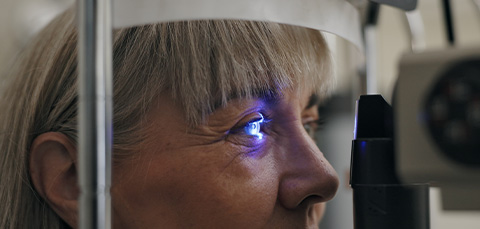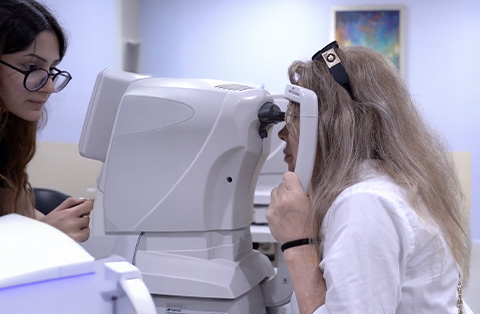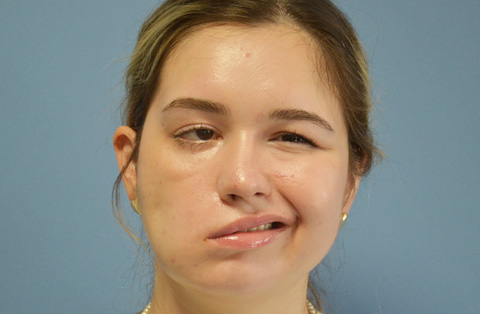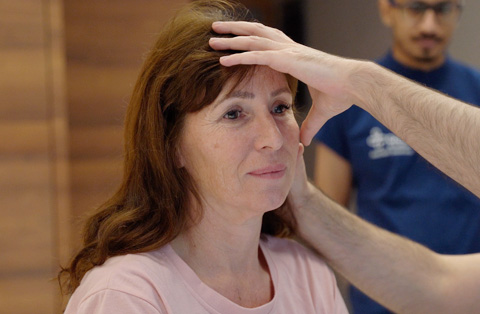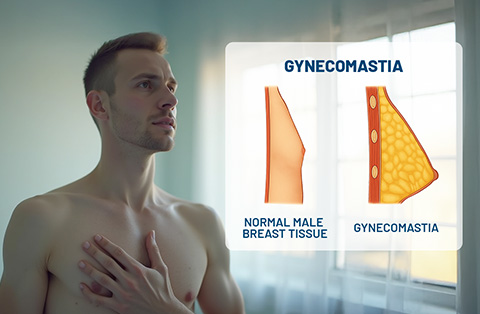Cataracts blur vision and make night driving dangerous. Learn how they affect your sight, when to seek treatment, and how cataract surgery can restore clear vision for safer driving, day or night.
What are Cataracts?
A cataract is the clouding of the eye’s natural lens. This lens is responsible for focusing light onto the retina, allowing clear vision. Over time, proteins in the lens break down and clump together, leading to cloudiness.
Cataracts develop gradually and can affect one or both eyes. They are common with aging but can also result from injury, medical conditions, or certain medications. Left untreated, cataracts can significantly impair vision and daily activities.
How Do Cataracts Affect Vision?
Cataracts gradually reduce vision clarity by making the eye’s lens cloudy. This cloudiness scatters light instead of focusing it properly on the retina, leading to various visual disturbances.
Common effects include:
Blurry or hazy vision – Objects appear out of focus.
Increased sensitivity to light – Bright lights may cause glare or discomfort.
Faded colors – Colors look dull or yellowed.
Double vision in one eye – A ghosting effect may occur.
Poor night vision – Difficulty seeing in low-light conditions.
As cataracts progress, these symptoms worsen, making daily activities like reading or driving more challenging.
Symptoms of Cataracts
Cataracts develop slowly, and symptoms may not be noticeable at first. As they progress, vision problems become more apparent.
Common symptoms include:
Blurry or cloudy vision: Objects appear hazy or out of focus.
Poor night vision: Increased difficulty seeing in low light.
Glare and halos: Bright lights may seem too intense, with halos around them.
Faded or yellowed colors: Colors lose their vibrancy.
Frequent prescription changes: Glasses or contact lenses need updating more often.
Double vision in one eye: Seeing overlapping images.
These symptoms can affect daily tasks, especially driving and reading. If left untreated, vision impairment worsens over time.
Why Cataracts Affect Your Night Vision?
Cataracts form when proteins in the eye’s natural lens break down and clump together. This process causes the lens to become cloudy, preventing light from passing through clearly. As a result, vision becomes blurry, distorted, or dull.
Key reasons cataracts affect vision:
Light scattering: Instead of focusing light properly on the retina, the clouded lens scatters it, causing glare and halos.
Reduced contrast sensitivity: Details in objects become harder to distinguish, especially in low-light conditions.
Color distortion: Colors may appear faded or take on a yellowish tint.
Difficulty adjusting to brightness: The eye struggles to adapt between bright and dark environments.
As cataracts worsen, these effects make everyday tasks, like reading and driving, increasingly difficult.
How Does Cataract Surgery Improve Vision for Driving?
Cataract surgery removes the clouded natural lens and replaces it with a clear artificial lens, restoring sharp vision. This procedure significantly improves driving safety by enhancing visual clarity and reducing common cataract-related issues.
Benefits of cataract surgery for driving:
Sharper vision: Eliminates blurriness, making road signs and obstacles easier to see.
Better night vision: Reduces glare and halos around headlights and streetlights.
Improved contrast sensitivity: Enhances the ability to see objects against different backgrounds.
More accurate depth perception: Helps judge distances, improving reaction time on the road.
Reduced dependence on glasses: Many patients experience improved vision without needing corrective lenses.
With clearer vision, driving becomes safer and more comfortable, especially in low-light conditions.
Post-Surgery Tips to Improve Your Vision
After cataract surgery, proper care helps ensure a smooth recovery and the best possible vision improvement.
Helpful tips for better healing and vision:
Follow your doctor’s instructions: Use prescribed eye drops and attend follow-up visits.
Protect your eyes: Wear sunglasses to shield your eyes from bright light and UV rays.
Avoid rubbing your eyes: This prevents irritation and infection.
Limit strenuous activities: Avoid heavy lifting and intense exercise for the first few weeks.
Give your eyes time to adjust: Vision may take a few days to stabilize.
Use proper lighting: Bright but soft lighting can reduce strain while reading or using screens.
By following these steps, patients can recover faster and enjoy clearer vision for daily activities, including driving.
Is It Safe to Drive at Night with Cataracts?
Driving with cataracts can be risky, especially as the condition worsens. Cataracts reduce vision clarity, making it harder to see road signs, pedestrians, and obstacles. They also increase glare sensitivity, especially at night.
Risks of driving with cataracts:
Blurry vision: Difficulty seeing traffic signals, road markings, and vehicles.
Poor night vision: Headlights and streetlights cause glare and halos.
Slower reaction time: Reduced contrast sensitivity makes it harder to detect hazards.
Increased light sensitivity: Bright sunlight and headlights can be overwhelming.
Mild cataracts may not significantly impact driving, but as symptoms progress, safety decreases. Regular eye exams help determine when it’s time to stop driving or consider cataract surgery.
Assessing Your Ability to Drive Safely
If you have cataracts, regular self-assessment and eye exams are essential to ensure safe driving. Vision changes can happen gradually, making it important to recognize signs that driving may no longer be safe.
Key factors to consider:
Clarity of vision: Can you clearly see road signs, traffic lights, and pedestrians?
Night driving ability: Do headlights and streetlights cause excessive glare or halos?
Reaction time: Are you able to quickly respond to sudden obstacles or changes in traffic?
Contrast sensitivity: Can you distinguish objects in low light or foggy conditions?
Recent accidents or near-misses: Have you experienced close calls due to vision problems?
If driving feels unsafe, consult an eye doctor for a professional evaluation. They can recommend corrective measures, including cataract surgery, to restore safer driving vision.
Recognizing When to Stop Driving
Cataracts can gradually make driving unsafe. It is important to recognize when vision impairment poses a serious risk to yourself and others on the road.
Signs it may be time to stop driving:
Frequent difficulty seeing road signs: Blurry or dim vision makes reading signs hard.
Struggling with night driving: Glare, halos, and poor visibility increase danger.
Near misses or accidents: Difficulty judging distances or reacting to hazards.
Trouble seeing pedestrians or cyclists: Reduced contrast sensitivity affects awareness.
Increased reliance on others for navigation: Needing passengers to point out hazards.
If these issues occur, consult an eye doctor. Cataract surgery can restore vision, allowing many patients to resume driving safely. If surgery is not an option, consider alternative transportation for safety.
How Vision Impairment Affects Driving
Clear vision is essential for safe driving. Cataracts and other vision impairments reduce the ability to see clearly, react quickly, and judge distances accurately.
Effects of vision impairment on driving:
Blurry vision: Harder to read road signs, traffic signals, and license plates.
Reduced night vision: Difficulty seeing in low light, with increased glare from headlights.
Slower reaction time: Delayed response to sudden obstacles or traffic changes.
Poor depth perception: Harder to judge distances between vehicles and objects.
Decreased peripheral vision: Limited awareness of surrounding traffic and pedestrians.
These issues increase the risk of accidents. Regular eye exams and timely treatment, such as cataract surgery, help maintain safe driving abilities.
Tips for Safer Night Driving After Cataract Surgery
Night driving can still be challenging after cataract surgery as your eyes adjust. Following these tips can improve safety and comfort on the road.
Allow time for recovery: Vision may take weeks to fully stabilize. Avoid night driving until cleared by your doctor.
Use anti-glare lenses: Glasses with anti-reflective coating can reduce glare from headlights and streetlights.
Keep headlights and windshield clean: Dirt and smudges can increase glare and reduce visibility.
Adjust dashboard lighting: Dim interior lights to reduce contrast strain.
Drive at a safe speed: Allow more reaction time in low-light conditions.
Take breaks if needed: Avoid eye strain by resting on long drives.
Regular eye check-ups help ensure continued safe driving after cataract surgery.
